Ford’s













Ford’s














FALL IS UPON US, MY FAVORITE TIME OF THE YEAR. Halloween is over, Veterans Day is coming, along with the Marine Corps birthday. Then my all time favorite holiday, Thanksgiving. Why? Well for me it is all the memories of those great family get togethers both as a kid and as an adult. This year might not be as joyous as years pass yet knowing my wife it will still be a day to remember. Our immediate family, kids and grandkids, will once again enjoy a day together.
When we started this project, PULSE of the High Desert, it was to fill a niche market in our area. There have been many ups and a few downs, and we continue to grow, improve, expand and learn. So many elements are involved in any business. The publishing industry, world wide, is on a decline. It for sure is not something I would encourage someone to do, starting a newspaper. Yet we are bucking the trends. Having the advertisers, contributors and readers we have, gives our TEAM the courage to keep going.
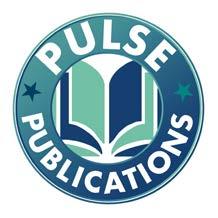
Thanks to those who support us by taking out a subscription, advertise with us and letting us know you enjoy our newspaper.
This November is also an important election, called mid-terms. Your vote is important. More so, your knowledgeable vote than at any time in our history. Never vote party lines or for a party candidate but for the measure or person. MAKE YOUR VOTE COUNT BY BEING INFORMED. Read and check with others on the Measure issues on the ballot as they are written in ways that mislead so you don’t know if you should vote for or against. DO NOT VOTE PARTY LINES.

November is a busy month with many important dates. First up is Daylight Saving time on the 5th, Spring ahead Fall back. We gain an extra hour.

Election on the 8th.
Marine Corps Birthday on the 10th and Veterans Day on the 11th. THANKSGIVING on the 24th.

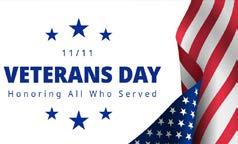
Traditional start of Christmas season is on the 25th.
JAMES CONKLE
JORGE LEANDRO RODRIGUES
LEN NORDMANN
LORI WESTON
CARY OLDENKOTT
SCHIBUSCH
BAILEY

VALLEY
RUSTY LAGRANGE



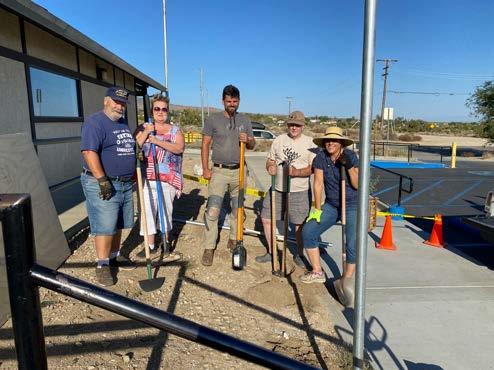
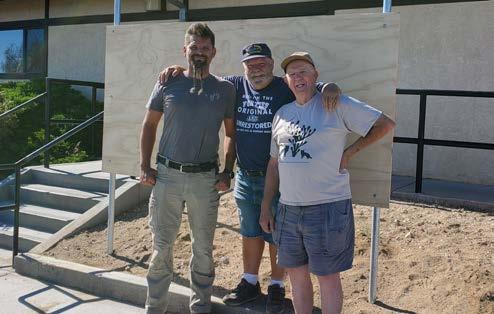
 By Wendy Walker
By Wendy Walker
THE PINON HILLS CHAMBER OF COMMERCE saw a need to add a public bulletin board to the Pinon Hills Post Office to try and reduce the clutter on the windows inside the building. Chamber secretary, Ed Greany devised a plan and the members went to work. The new bulletin board will allow the public to post lost and found posters, business flyers and other informational posts. There is a locked case to display post office hours, official messages and community events. Chamber members Robert Blue, Ed Greany and Jim Conkle worked over several days to set the posts, attach the plywood, and paint and seal the wood. Sarah Bailey, from Wrightwood Metal Works will be adding a metal sign to finish it off.
HIGH DESERT, CA – A NEW REPORT HAS JUST BEEN RELEASED WHICH REVEALS 7 COSTLY MISTAKES that most homeowners make when selling their home, and a 9–Step System that can help you sell your home fast and for the most amount of money. This industry report shows clearly how the traditional ways of selling homes have become increasin gly less and less effective in today’s market. The fact of the matter is fully three quarters of home sellers don’t get what they want for their homes and become disillusioned and-worse- financially di sadvantaged when they put their homes on the market.
As this report uncovers, most homesellers make 7 deadly mistakes that cost them literally thousands of dollars. The good news is that each and every one of these mistakes is entirely preventable. In an answer to this issue, industry insiders have prepared a FREE spe cial report entitled “The 9-Step System to Get Your Home Sold Fast and For Top Dollar. “
To hear about how to order your FREE copy of this report call toll -free 1– 800–596–5137 and enter 1000. You can call anytime 24 hours a day, seven days a week. Get your FREE special report NOW and find out how you can get the most money for your home.
Users are encouraged to remove their posters if the information expires or is no longer relevant and/or if ten days have passed. A revised post can be put up to keep the display looking neat. For better durability and weather-proofing, plastic sleeves or laminated sheets are suggested.
Pinon Hills Chamber of Commerce meets at 6pm on the 3rd Tuesday of each month at 10405 Mountain Road, Pinon Hills. They can be reached at 760 868-5801.

STARTING IN CHICAGO and running to Los Angeles, it was later extended to Santa Monica. 2448 miles long, the highway was soon known as the “Main Street of America.” It was an appropriate name, as it included the main streets of countless cities as it passed through eight different states. Interestingly, the entire route was not paved until 1938. The main purpose of the highway was to promote commerce in these cities. New businesses, catering to the travelers, soon appeared along the highway. Food, fuel and repairs, and lodging services boosted the economies of the towns along the route. The first drive-throughs, fast food, motor
By John Weaseinns, and roadside advertising were born. Aside from vacationers, Route 66 was the way west for the multitude fleeing the dust bowl states in the 1930’s. John Steinbeck was the first to call Route 66 “The Mother Road” in his novel “The Grapes of Wrath.”
Although these highways greatly benefited the cities, by the 1950’s the country had outgrown them, and the Interstate Highway Act was passed in 1956. The interstates bypassed many smaller towns completely. Commerce from travelers moved along the interstate, or near the off ramps. The downtown main street businesses that remain, struggle to survive. Barstow is a
good example. Barstow, along with many other cities on the now decommissioned U.S. Route 66, uses the “Historic Route 66” designation as a tourist draw.
Barstow’s downtown Main Street certainly came to life on Saturday, October 8. It was the 23rd annual Main Street USA Festival. The festival included the Miss Route 66 pageant, food vendors, a beer garden, and the Saturday Night Cruisers’ car show.
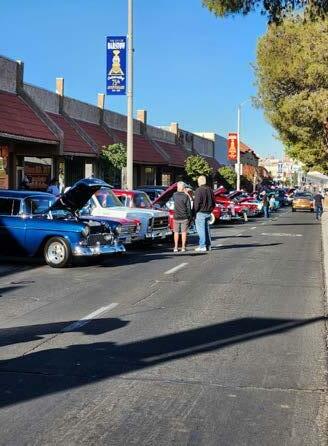

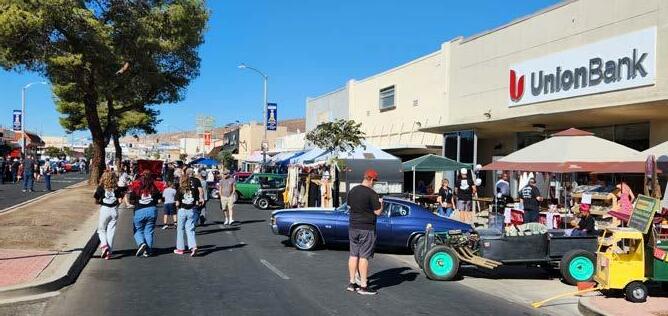

Main Street was closed between 2nd and Barstow Road. The sidewalks were filled with kiosks of vendors selling all manner of items, as well as companies and service organizations answering questions and
handing out information.
The Miss Route 66 pageant was open to all ages, and was pretty casual. Signage stated no fancy dress allowed, come as you are. Everyone received a tiara and sash. It was more fun than formal.
Ahead of their time for ‘inclusiveness,” the Saturday Night Cruisers allow every type vehicle imaginable. Hot rods, customs, well preserved classics, low riders, motor cycles, and pickup trucks all can be found there. If those are not enough, there are always a variety of quirky entries, like the bar stool go-karts, or children’s wagons with racing slick tires. There is something for everyone to admire, or nostalgically recall “I had one of those…”
There was a large crowd, and so much to enjoy. If you missed it this year, you missed quite a wonderful event. There were many people enjoying themselves in the post Covid world. A lot of happy folks getting their kicks on Historic Route 66.
Best In Show Chuck McConnell
1965, Ford Ranchero
Chick Magnet Bob Ward 1922 Ford Model T Roadster Mayor's Choice Bruce, Gerald 1950, Ford, 2Dr Sedan Memorial Award Ron Bowen 1930, Ford Model A
Push Pull Pedal RD Salas Custom Childs Wagon
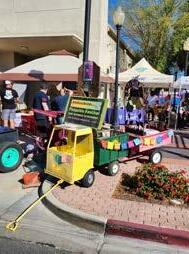
Rod Carson Memorial Charles Scolastico 1957 ford Thunderbird Josh Carson Memorial Jesse Cuajardo 1920 Indian Motorcycle
National Street Rod Association Juan Majles 1937 Chevrolet 2-Door Sedan

ABC Apparel Clarence Love
1971 Volkswagen Bus/Baywindow
Back to Backs General Store Rose Beardshear Awesome Wagon

Barstow Tire & Brake Saul Castro 1939 Chevrolet
Billie's Kitchen James Noble 1971 Chevrolet Chevelle Clemmer Services Shawn Benson 1931 Ford Model A Truck Computer Solutions Dan LaPorte 1965 Oldsmobile Cutlass
Conversions Firestone Jalen & Jassen Griego 1975 Ford F-100 Truck Crave Kaffee Haus Jim Bishop 1970 El Camino SS Darrin Fikstad & Associates Mike Gallucci 1948 Ford Station Wagon
DJ Magik Mic Allen Jennifer McPowell 1969 Ford Torino Downtown Liquor Bill Rominek 1931 Model A Ford Victoria Leatherback Fitness MD Ray Valles 1931 Ford Model A Ratrod
ForZia Market Place Gary Bunker 1957 Chevrolet 210

Gesierich Realty Dale & Paula 1970 Chevrolet Z28 Camaro
ISU ARMAC Insurance Services Phil & Eileen Lee 1955 Chevrolet Bel Air Kandy's Pups N Stuff Steve Tomliwson 1923 Ford T-Bucket Kiwanis Club of Barstow Crossroads Mark Faherty 1967 Chevrolet Wagon
Neighbor's Market Tom Pitard 1957 Chevrolet Bel Air Optimist Club of Barstow Jim Dube 1972 Chevrolet C10 Cheyenne Truck Paradise Family Realty Mike Stewart 1966 Chevrolet Nova Paul Wilkey State Farm Lester Smith 1955 Ford Thunderbird
Route 66 Pulse Don Brown 1933 Dodge 5 Window Coupe
Sparkle Car Wash David Cordova 1938 Chevrolet Master Deluxe The House of the Band Matthew Simco 1985 Chevrolet Monte Carlo T-Mobile Mojave Auto Group 2022 Ford Mustang 5.0 Premium Package
Treasure House Mall Robert Bengel 1969 GTO Judge
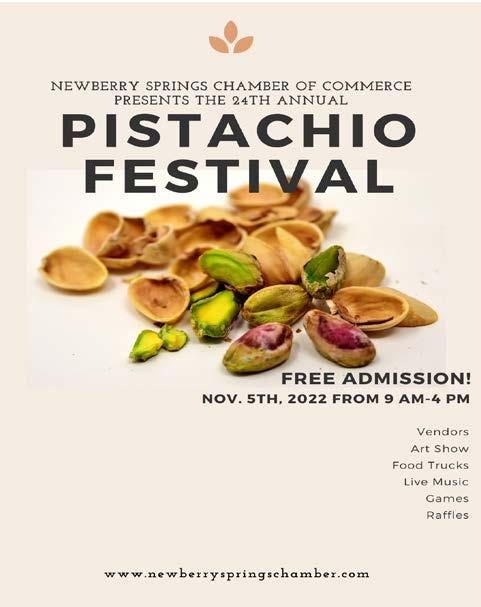
MUSICAL PERFORMANCES, A PETTING ZOO, AN ASSORTMENT OF TRINKETS, TREATS AND MORE will be present for all to enjoy at the Newberry Springs 24th Annual Pistachio Festival. This celebrated festival will be held Saturday, November 5th, from 9 am to 4 pm in the Community Park, located at 30884 Newberry Road.
A national anthem performance and the Silver Valley Cadet Color Guard will kick start the event, followed by a variety of fun-filled activities throughout the day, such as face painting, kid-themed games, a silent auction, raffles, an art exhibition, gun fighters AND the first annual Pistachio Festival Kickball Tournament!
Alongside various forms of entertainment, an array of tents will offer delicious indulgences. Naturally, pistachio-focused foods will be on the menu, but separate from this culinary nut, goodies such as Italian ice, baked goods, local honey, and vegetables from Marco’s Produce will be available.
Other vendors will offer goods that visitors can buy or merely gander at as they move throughout the festival grounds. These goods will include Native American jewelry, ponchos, farmhouse signs, handmade crafts, and ceramics, just to name a few.
Providing music throughout the day is local celebrity Ranger Wayne “Damage” Hartel who will host a few live performances with his newly formed band the Barstones. A few years back, Ranger Wayne was invited along with the Quarrymen on a three-week nationwide tour. If he can ROCK 6,000 people at the Radio City Music Hall in New York, imagine what he can do for our little ol’ Pistachio Festival!
The first pistachio celebration was in 1997 hosted by a small group of local pistachio growers. The celebration was held at a Newberry
Springs processing plant called Big Al’s Pistachios, as a toast to the year’s harvest. Since then, the Newberry Springs Pistachio Festival has an outstanding regional reputation and continues to grow in size, drawing new crowds and vendors from across Southern California each year.
APPROXIMATELY 70 MILLION AMERICANS will see a 8.7% in crease in their Social Security be nefits and Supplemental Security Income (SSI) payments in 2023. On avera ge, Social Security benefits will increase by more than $140 per month starting in Janu ary.
Federal benefit rates increase when the cost-of-living rises, as measured by the De partment of Labor’s Consumer Price Index (CPI-W). The CPI-W rises when inflation in creases, leading to a higher cost-of-living. This change means prices for goods and services, on average, are higher. The cost -of-living adjustment (COLA) helps to offset these costs.
We will mail COLA notices throughout the month of December to retirement, survivors, and disability beneficiaries, SSI recipients, and representative payees. But if you want to know your new benefit amount sooner, you can securely obtain your Social Secu rity COLA notice online using the Message
Center in your personal my Social Security account. You can access this information in early December, prior to receiving the mailed notice. Benefit amounts will not be available before December. Since you will receive the COLA notice online or in the mail, you don’t need to contact us to get your new benefit amount.
If you prefer to access your COLA notice online and not receive the mailed notice, you can log in to your personal my Social Se curity account to opt out by changing your Preferences in the Message Center. You can update your preferences to opt out of the mailed COLA notice, and any other notices that are available online. Did you know you can receive a text or email alert when there is a new message waiting for you? That way, you always know when we have something important for you – like your COLA notice. If you don’t have an account yet, you must create one by November 15, 2022 to receive the 2023 COLA notice online.
“Medicare premiums are going down and
Social Security benefits are going up in 2023, which will give seniors more peace of mind and breathing room. This year’s substantial Social Security cost-of-living adjustment is the first time in over a decade that Me dicare premiums are not rising and shows that we can provide more support to older Americans who count on the benefits they have earned,” Acting Commissioner Kilolo Kijakazi said.
January 2023 marks when other changes will happen based on the increase in the national average wage index. For example, the maximum amount of earnings subject to Social Security payroll tax in 2023 will be higher. The retirement earnings test exempt amount will also change in 2023.
Be among the first to know! Sign up for or log in to your personal my Social Security account today. Choose email or text under “Message Center Preferences” to receive courtesy notifications.
You can find more information about the 2023 COLA
NO ONE LIKES TO STAND IN LONG LINES especially while waiting to see a doctor. Dr. Hisham Abukamleh le arned that lesson when he was a young boy living with his family in a refugee camp. He remembered the lines of people waiting for medical attention and saw how difficult it was for those with injuries or fevers to wait for help.
He decided to become a doctor so he could make a difference for people who were in pain. He believed that people forced to wait in long lines for medical help were being underserved. “I believe the shortage of timely medical care is a humanitarian issue,” he said. Eventually he and his family came to the United States and settled in the High Desert.
He attended Victor Valley College and UC Riverside. He went to medical school in the Caribbean, received his medical training in Bakersfield and selected Internal Medicine as his specialty because doctors in this field cover all aspects of the patient’s treatment and care. Dr. Abukamleh recently opened his office in Apple Valley. He is a Paragon Healthy Partner.

He compares his role as doctor of Internal Medicine to being the quarterback of a football team. He sees adult patients first, by re ferral from another physician or the patients calling his office them selves for an appointment. He assesses the problem, much like a quarterback making a game plan. He can handle general medical issues but may refer the patient to a specialist. As patients progress through diagnosis, testing and treatment, Dr. Abukamleh formula tes the next moves.
“Specialists and others send their test results and information to me,” he said. “I collect everything and decide where to go or what to do next.”
With their emphasis on preventative care. Dr. Abukamleh and his team enjoy seeing that patients receive the treatments they need. The best reward is taking complicated cases and removing the pa tient’s feelings of helplessness. “We want to send the patient home, happy.”

During the current pandemic, Dr. Abukamleh and his staff prac tice “patientcentered” using “unprecedented precautions.” “We appointments and patient distances,” he said, “and we have hand sanitizers at every station.” Masks and gloves are standard wear for everyone in the office, and all sta tions down thoroughly after every visit. In addition, patients’ tem peratures can be taken enter the office, and patients can their cars as well.
Dr. Abukamleh sees patients Valley Hospital and Victor Valley Hospital in Victorville a Mary Medical in Apple Valley.
To make an appointment, call 760-515-4003. His office is located at 18144 Highway 18, Ste. 140, Office hours through Friday, 9 a.m. to 5 p.m.



IMAGINE A CALIFORNIA WHERE THE MENTAL HEALTH OF CHILDREN , youth and families is cared for and supported in every aspect of their lives. Thirty stakeholders from the High Desert and other areas of rural San Bernardino County recently came together to share their insight to help make this vision a reality throughout our state.
The goal of the Children and Youth Behavioral Health Initiative (CYBHI) is to reimagine the way behavioral health support is provided to all children, youth and families in California.
“We aim to do this by aligning the systems that support behavioral health to create an ecosystem that fosters social and emotional well-being and addresses the behavioral health challenges facing children and youth,” explained Melissa Stafford Jones, Director of the initiative. “The initiative takes a whole system approach by creating cross-system partnerships to ensure that the reimagined ecosystem is child and youth-centered and equity-focused.”
One major aspect of the CYBHI is to hold engagement events throughout the state and assess resident experiences with the current state of our behavioral health system. The California Department of Health and Human Services (CalHHS) hosted events in the larger urban areas along the coast, but wanted to ensure that our rural and inland residents were included in the discussion.
The Children and Youth Behavioral Health Initiative was announced
in July 2021 with a $4.4 billion investment to enhance, expand and redesign the systems that support behavioral health for children and youth. This stakeholder engagement gathering was designed to collect feedback, stories, and information about the experiences of youth, parents, and other stakeholders to inform these efforts.
This event was focused on gathering feedback and data regarding the opinions of rural residents of any background, age group, career, or pre-existing relationship with the California youth-serving behavioral health system. The CYBHI team aims to listen closely to the needs of attendees and collectively brainstorm a more equitable behavioral health system.
“I thought it was spectacular,” commented Michael Grabhorn, a Victorville resident and High Desert Community Coalition member who participated in the confidential listening session. “I can’t wait to read the report on the data that is being collected and to see what happens next.”
Please visit CYBHI project for more information about the CYBHI project.
Contact: Sarah Boyer Institute for Public Strategies (760) 843-7003 ext. 146 sboyer@publicstrategies.org



To celebrate the new season, we’ve rounded up 6 festive activity ideas that you can enjoy with your older adult.
They’re all simple, inexpensive, and fun!


Coloring is an activity that everyone can enjoy, from the very young to the very old, as a solo activity or with others.
As an added bonus, psychologists say that coloring has stress-busting abilities si milar to meditating.
There are hundreds of free, printable, fall -themed coloring pages available online.
Here are some of our favorites:
• 30 festive fall images with autumn lea ves, pumpkins, apples, sweaters, owls, scarecrows, and more
• A variety of fun fall scenes including fall scenes and animals, trees/leaves, pumpkins/squash, and Halloween-the med pages
• 24 fun Halloween designs including a few classic Disney characters
Making and putting up fun decorations is a nice way to mark the change of seasons and get in the mood for fall holidays.
It’s also a good opportunity to display some of those finished coloring pages!
Simple and fun DIY ideas:
• Fall leaf garland – bring some gorgeous autumn color inside with these leaf templates or go outside to collect fal len leaves
• Clove-studded orange pomanders –delicious-smelling and beautiful
• Ribboned pumpkins – a few ribbons transform pumpkins into lovely decor
Sitting at the table with a warm beverage and a festive puzzle is a great way to cele brate the season.
Here are some of our favorites:
• Rocky Mountain Wildlife – 35-piece sequenced puzzle with color coded pieces, peaceful mountain scene with dozens of animals, designed for people with Alzheimer’s or dementia
• Mystic Hour – 100-piece puzzle, a cozy cabin in the woods at sunrise
• Birds On A Flowering Branch – 300 lar ge-piece puzzle, five beautiful birds on a lovely branch
• Signal Point – 500-piece puzzle, a quaint lighthouse and charming seasi de cottage
Baking, mixing, and assembly are fun acti vities that many older adults will enjoy.
Mmmm! Try these delicious and easy-to -make treats:
• Baked apple roses – easy to make and they truly look like gorgeous roses
• Baked apples with oatmeal streusel topping – simple, healthy, and delicious
• No bake pumpkin cheesecake – chee secake, pumpkin, no baking…what could be better?
• Soft glazed pumpkin sugar cookies –add some pumpkin spice to a classic cookie
If you’re planning to hand out treats to children in the family or neighborhood kids, your older adult might enjoy helping with the preparations.
For a safer, no-contact Halloween, prepare individual treat bags in advance and place them on the porch so trick-or-treaters can help themselves.
Some ideas:
• Prepare fun little pumpkin pouch goody bags
• Use the completed coloring sheets and other decorations to make the front door more festive
• Someone with dementia might enjoy sorting a mixed bag of candy into di fferent containers. It’s a great no-fail activity that helps them feel included –even if you don’t really need the candy to be sorted.
6. Enjoy the natural scenery and fresh air Fall is a wonderful time to enjoy nature with your older adult.
Bundle up and breathe the fresh air, admi re the beautiful colors on display, and hear the crunch of fallen leaves as you walk.
Be sure to wear face masks (unless it’s not safe for your older adult’s health conditions) and keep a safe distance from other people.
Adapt activities to suit different mobility levels:
• Open a window to smell the fresh air and take in the scenery
• Relax in the backyard or on the porch
• Walk to the mailbox and back
• Stroll a block or two in the neighborhood
• Walk through a local park
By DailyCaring Editorial TeamZelda declared as she wriggled her tiny frame out of the cavernous restaurant booth that had swallowed her up.
“I am somebody’s demented grandmother,” she added with a giggle once she had planted her feet on solid ground.
I cared for my dear stepmother Zelda from 2005 to 2006 as she gradually disappeared into the fog of dementia.
Her self-awareness, the sense of humor that helped define her, a lively imagination – all slowly sucked into the vortex of an unrelentingly progressive disorder.
Since Alzheimer’s research was in its infancy and outside resources were scarce back then, so much of what I learned came from trial and error.
In sharing our story, I’ve confirmed that many of those lessons remain timeless and universal.
But Day One, there I was – a raw recruit, bursting with naïve expectations.
In the beginning, I read every book I could find on aging and cognitive decline, hoping to better arm myself against a stealthy and cunning foe that threatens to destabilize family relationships and annihilate established routines.
One thing the books taught me was to be discerning; not all counsel is good counsel for a given situation.
But when you are companion to a dementia sufferer whose conscious thoughts have no consistent framework, concerns for the future plague you, and expert advice can start to feel like scolding.
Zelda lives in the moment by default.
She has lost her ability to connect today to tomorrow. And yesterday – unrecordable in the jumble of disconnected synapses at the root of her confused thinking – may not exist for her at all.
Now I must train myself to identify with her new perspective without being engulfed by it.
Some days this is a challenge. But the will soldiers on.
In the course of that forward march, I formulated a strategy to help me stay on course.
As you map the way through your own caregiving adventure, I offer some guideposts.
Use them according to your own best judgment, steered by your intuition and your heart.


With doctors, with people who “mean well” but don’t know the whole story.
And ask for help, when you need it.
With yourself above all, with your charge, and with others who share your concern for the sufferer.
Of your own missteps: There is no onesize-fits-all map to follow in this calling.
overwhelming, or bigger than you are, lean on your faith or spirituality.
Or bike it off or swim it off. Physical activity is a side effect-free path to tranquility.
And getting or staying fit bolsters not only your self-confidence but also your emotional and physical stamina. Serotonin and endorphins are our friends.
About anything: another person’s state of mind, or health, or view of your circumstances.
Communication is key here. Ask the question. Clarify the message. Choose your advisors with care. Take good notes when new facts emerge.
And by “it” I mean anything.
But the literature also induced me to be flexible as I slowly accepted the fact that general principles of behavior no longer applied.
A 2005 journal entry reflects my frustration:
The concept of living in the moment is popular with contemporary mental health specialists. It makes sense in the context of busy lives complicated by conflicting demands from work, family, school, social causes. Don’t miss out on today obsessively planning for or worrying about tomorrow, they caution.
I get it.
You’ll just end up with one more thing to forgive yourself for!
To your spouse, to your siblings (they need the opportunity to share your reality, anyway), to a support group, to good friends.
Keep a dump-it-all-here journal, compose an email or a letter to a supportive friend, join an online discussion page.
Whenever your situation seems hopeless,
You are not the cause of the dementia sufferer’s ill-temper. And your actions may not be the motivation behind constructive criticism.
Opinion-givers are often moved by their own frustration, guilt, denial, sense of helplessness, or sheer lack of information.
Throughout the caregiving experience, emotions can run wild on all sides. I hope these reminders will help you tame them.
If you should reach the boiling point, please sleep on it before zipping off a fiery email or making a heated phone call.
I personally tested the acting on impulse thing, so I can save you the trouble. In the trial and error system, that one definitely belongs in the error column.
MUCH LIKE A SPECIALIZED CHAMBER of commerce for nonprofits, schools, ministries, public service agencies, volunteers and community-minded businesses, Inland Empire Resource Network Convenings provide meaningful opportunities for regional leaders to learn about funding opportunities, resources and best nonprofit best practices, meet with peers, exchange ideas, and share resources with the aim of fostering higher levels of cooperation, collaboration and community support.
Our vision is an Inland Empire where leadership is strong, collaboration and innovation are the standard communities thrive, and opportunity abounds for all. Academy for Grassroots Organizations™ (AcademyGO) is an independent, nonprofit management support organization working to strengthen community organizations and their leaders.
Each year, AcademyGO works with hundreds of organizations and their leaders to help them learn new skills and
best practices, develop resources, and collaborate in order to improve quality of life for the region’s diverse population. Programs include training, networking and collaboration opportunities, information and resources sharing, and technical assistance provided to organizations that address a wide variety of community needs.
Today, with a mission to Convene, Equip, and Guide Community Leaders, “AcademyGO” provides a variety of resources and learning opportunities throughout the region.
AcademyGO began in 2000 in the City of Barstow, California as a networking group aimed at helping a few dozen community groups share information and resources. Today, AcademyGO is a recognized nonprofit leader, trainer, and convener with an extensive network of thousands of nonprofit professionals and volunteers throughout the Inland Empire region. The organization is a critical component of the region’s infrastructure, as well as the nonprofit capacity-building ecosystem in Southern California.
AcademyGO works with a wide variety
of community organizations including nonprofits, schools, public agencies, associations, clubs, ministries, funders, and businesses that serve the residents of San Bernardino and Riverside Counties. Of the more than 10,000 nonprofits serving the region, most are underfunded and lacking resources to sufficiently meet identified needs.
Strengthening community organizations is critical for the Inland Empire and our State. The region continues to be the epicenter of new growth and demographic change in California, yet higher rates of poverty, and poor education and health outcomes, continue to plague the population.
Business leaders are encouraged to attend to connect with the nonprofit sector which contributes more to the gross domestic product and employs more of the nation’s workforce than several industries including utilities and construction.
For more information, visit www. AcademyGO.org.
THE HDCWC OPENED A PANEL OF LOCAL AUTHORS discussing children’s books and stories and the different approaches to this genre of writing and editing at the Hesperia Library on October 17th. This free presentation was intended to inform and encourage those wanting to write children’s stories but did not know where to begin.
The remarkable thing about this panel was its makeup of such different authors. Andrea Willow’s “The Whole World is Naturally Curly” is an artistic book that can appeal to adults as well as children. Amelia Hansen, at 14 years old, has published nine books about the adventures of a cat saving other animals in distress; Mary Langer Thompson has written “How the Blue-Tongued Skink Got His Blue Tongue” and “The Gull Who Thought He Was Dull” and Mary Ruth Hughes has written a series of books accompanied by a CD of the story plus music.
Moderator Jenny Margotta has edited 162 books during her career, many of which are children’s books. She offered a multitude of tips on getting together specific information and intent before you start writing the book, and advice on how best to think about publishing it.
All participants are members of the High Desert Branch of the California Writers Club (HDCWC) which meets monthly in Apple Valley.

For more information, visit www.hdcwc.com or call 760.221.6367


There were “stills” hidden in Furnace and Arctic Canyons. There was even a still in a mine tunnel which had its entrance hidden by chicken coops. We have an original tub with axe holes in it from a raid found in a tunnel hideaway.
Another story has a local gas station that had one tank that held moonshine. This “fuel” was dispensed only to trusted customers through a dedicated pump.
As we reflect on its history, and the fun we enjoyed with Halloween Spirts at our annual Trunk or Treat Festival was all the family fun, foods, and drinks.
thing history
completely
but
were
DID YOU KNOW WHEN WE PREPARED FOR OUR ANNUAL TRUNK OR TREAT FESTIVAL this past Halloween with all the spirits, ghosts, goblins, and costumes at the Senior Center (October 31st)— and ready for the coming holidays with all its foods & drinks, there was a time when our “Spirits/Drinks” were outlawed.
In 1919 the eighteenth amendment to the US Constitution was passed which banned the manufacture, transport, and sale of al coholic beverages. What did our local law-abiding citizens do back then? … bootlegged their liquor. They felt it was none of the govern ment’s business and distilled their own liquor in defiance of the law.
One story in Lucerne Valley, a rancher had his stuff buried in the driveway, hidden. But when the bootlegger had a fight with his wife, she informed on him. Prohibition enforcers came, showed the war rant, borrowed a pitchfork, and went at everything in sight. They pitchforked the haystacks, hay bales, the grain, and around the dri veway. They finally gave up and returned to their cars to leave … which were parked over the rancher’s hidden stash.
There were “stills” hidden in Furnace and Arctic Canyons. There was even a still in a mine tunnel which had its entrance hidden by chicken coops. We have an original tub with axe holes in it from a raid found in a tunnel hideaway.
Another story has a local gas station that had one tank that held moonshine.
This “fuel” was dispensed only to trusted customers through a dedicated pump.
As we reflect on its history, and the fun we enjoyed with Halloween Spirts at our annual Trunk or Treat Festival was all the family fun, foods, and drinks.
One thing history has taught us … Lucerne Valley may be arid, but we were never completely dry. And now you know ….
11 /5 Museum Outdoor Yard open from 10 am to 2 pm …We are next to our library and it’s free
11 /6 Hike at Chimney Rock, 10 am followed later with Battle at Chimney Rock presentation at 5 pm in our Museum yard then Sto ries Around the Campfire.
Both events are free.
For more interesting historical stuff, see our book “Lucerne Valley: A Wild West Town of Character(s)” now on sale at our market.


THE MOJAVE DESERT AIR QUALITY MANAGEMENT DISTRICT (MDAQMD) wants to buy your old car.

The District’s Car Buy Back and Scrap program offers $1,000 to residents in exchange for their operable, registered vehicle at least 20 years old or more.
MDAQMD funds the program and contracts Environmental Engineering Studies, Inc. to operate it. Funds are available for the program until they’re exhausted each year.
Aside from the 20-years-or-older requirement, a qualifying vehicle is in working condition; has been registered as operable in MDAQMD’s jurisdiction (which includes the High Desert portion of San Bernardino County and Palo Verde Valley in Riverside County) for the preceding 24 months; and passes a smog check if the vehicle is due for one within 60 days of the surrender date. Other restrictions apply.
Once the local scrapper receives the vehicle and verifies compliance with the requirements, the registered vehicle owner will receive a check for $1,000.
This program is not operated by the State of California. For more information on how to participate and additional requirements to qualify a vehicle, call 800-717-7624.


For more information about MDAQMD and its mission to attain and maintain healthful air quality, visit mdaqmd.ca.gov or find them on social media.
of

US Navy Veteran 1963/66 Retired AT&SF railroad






Wears his Navy ribbons proudly on his railroad hat. Board member of the Mojave River Valley Museum Member of SWIM

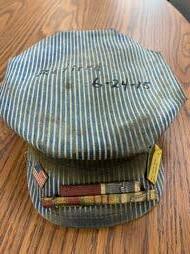




Community members ran and walked together to forge a new tradition at the inaugural Run in the Rocks on Oct 15, which raised more than $7,000 Proceeds will fund science based projects, field trips and scholarships for Lucerne Valley Unified School District students







The 5k was put on in place of the previous annual fundraiser, Ride in the Rocks, held from 2009 to 2019, which allowed Mitsubishi Cement Corporation Educational Foundation the wonderful privilege of sending hundreds of 5th grade classes to the High Trails Outdoor Science School in Big Bear over the years MCCEF would like to sincerely thank each and every volunteer, from those who ran or walked to those who helped behind the scenes Congratulations to Dutch Demke, 13, who won the 5k with a time of 20 minutes, and 6 seconds


THE FIRST DAY OF OCTOBER was a busy one in Apple Valley. Locals were up early setting up Street Fair booths at James Woody Park (including ours,) arriving in antique and classic cars for the Car Show, and getting ready for the Happy Trails Parade. Our historically themed float, “Hollywood Comes to Apple Valley,” featured 13 “celebrities” whose films spanned seven decades, from 1937-2008.


Representing the old Westerns were MHS members Mike Phillips as Herb Jeffries in 1937’s “The Bronze Buckaroo,” and Bill Cadenhead as John Wayne in 1939’s “Stagecoach,” along with Roy Rogers playing himself in “King of the Cowboys” 1943.
Excitement and terror reigned in 1955’s “Tarantula,” with the frightening spider played by Jamie Paye, and 1977’s “The Hills Have Eyes’” with Marina Kranz as one of the cannibals. Coincidentally both are mentioned in Rene DelaCruz’s Oct. 14, 2022 Daily Press article entitled “Horror and SciFi Movies Filmed on the Mojave Desert.”
The beautiful Apple Valley Inn was the setting for several mid-century movies starring the glamour girls of the era,
including 1954’s “Highway Dragnet” with Teri Watanabe as Joan Bennett, 1955’s “Fox Fire” with MHS member Bonnie Ingram as Jane Russell, and MHS member Marcy Taylor as Joan Benedict, who played Poopsie Patata in “Saturday Night Bath in Apple Valley” 1965.
The military was front and center in two non-fiction films. Gary Whitesides played Alan Ladd in the 1955 biographical film “The McConnell Story.” MHS member Anna Diamond represented an American soldier in Billy Bob Thornton’s 2008 “Eagle Eye.”

Action movies with good chase scenes are always exciting. Three movies filmed in three different decades provided the adrenaline rush: Mike Johnston played Kirby Grant in the 1956-58 TV series “Sky King.”
The villains never got away from the cowboy pilot behind the controls of the Songbird. Ten years later in 1967 Phyllis Diller, played by MHS member Carol Johnson, raced down Highway 18 with co-star Bob Hope in “Eight on the Lam.” Ten years after that, in 1977, Ron Howard, played by MHS member Delvin Harbour, zoomed down the same stretch of road in “Grand Theft Auto.”
So you say you missed the parade? Then don’t miss the Dec. 15 MHS Christmas party, when these famous characters will make their second appearance. Mark your calendars, as this is a rare opportunity to get up close and personal with some of the stars of movies filmed right here in Apple Valley.

ARECENT ARTICLE IN THE “DAILY PRESS” referred to the tremendous amount of wealth that the late Queen Elizabeth left to her heirs. And part of that tremendous wealth is a coin made of genuine Apple Valley horse poop, produced by a genuine Apple Valley horse, which with the talent of a genuine Apple Valley man, was made into a piece of art fit for the Queen of England!
Now I am not making this up. A popular Apple Valley business back in the 1970’s was “Apple Valley Creations” operated by John Westman out of his house in the old Apple Valley Village area at 13861 Osage known as “The House of the Green Door.”
Now this green door did not hide a marijuana dispensary, but rather an art studio that produced objects from organic materials.
These included bowls, plates, ashtrays, and other items made from a variety of materials such as orange peels, Apple Valley apples, wedding cake, old newspapers, joshua trees, tumbleweed, bread, and yes, even horse poop.
A Wed. Nov. 30, 1977 London newspaper headline read, “ Coin made from Horse
Manure deemed ‘Most Original’ Silver Jubilee Gift to Queen Elizabeth.” On display at St. James Palace, along with all the other exotic gifts the Queen received, was “a coin presented by a California gentleman.

OUR SEPT. 22 SPEAKER was our own MHS member, and active member of the Sierra Club, Nor man Bossom, on the topic of the Big Horn Mine in the Wrightwood area. His power point presentation was in two parts. Part 1 covered the incredible life of Tom Vin cent, a mountain man in hiding for 56 ye ars, who built and lived in a rustic cabin in his namesake Vincent Gulch from 1870 until 1926. While out hunting bighorn sheep, he discovered the gold mine. Part 2 told the story of the mine itself, discovered by Tom Vincent in 1894. Perched at 7000 feet on the eastern slope of Mt. Baden-Powell and six miles west of Big Pines, the mine was most active in the early 1900’s, with some brief renewals of activity later on.

A few weeks prior on August 27 a num ber of MHS and Sierra Club members vi sited the Wrightwood Museum located in the old firehouse. We got a little preview of Norman’s presentation there, as we viewed photos and paintings of Vincent and the mine. The Saturday following his presenta tion on Sept. 24 Norman led a group of Sier ra Club members on the five mile hike out
to the mine itself. You can find further infor mation on page 108 of “Images of America: Wrightwood.”
Thank you, Norman, for being such an
About the size of a jubilee crown, it has a Red Indian head on one side, with a buffalo on the other. And it is made of dung!” Oh, I wonder if that coin has any resemblance to the wooden nickels locals could redeem at the Buffalo Trading Post. (I’m sure that was not a coincidence.) Mr. Westman apparently also sent, by way of Mr. Henderson, a plate made of apples, as acknowledged in the July 8, 1977 thank you note received from Buckingham Palace.
Now don’t you think that horse poop coin from Apple Valley deserved to be displayed right up there with the two human skulls from the South Pacific, the dinner plates sent by President Carter, the silver vanity set from King Hussein, and the Bible from the Pope? I sure do! After all, it was one of only three photos of the Queen’s gifts that appeared in the London “Daily Express.” I wonder which one of the Queen’s heirs will be the lucky recipient of the Apple Valley apple plate and the coin made from the poop of an Apple Valley horse.
To see more of John Westman’s AlArt objects, visit the Apple Valley Legacy Museum.
active member of our organization and community, for researching and sharing lo cal history, while at the same time promo ting physical fitness. You are inspiring!

THE SECOND WEEKEND IN OCT. was certainly a celebration of local history, with several MHS members supporting two accomplishments of other organizations.
member of the group clarified the locations. Meanwhile, Nick Cataldo’s group hiked a short way up Crowder Canyon, learning about the Native American trails, John Brown’s Toll Road, and the Pacific Crest Trail, which all passed through this steep canyon. It is hard to imagine how wagons and later automobiles could make it through there. A highlight was seeing the remains of an old bridge- a real photo op. Again, a packet of pictures and diagrams was provided to aid in understanding. Then of course the two groups switch spots for part 2. (Note to board members: If you didn’t learn a lot on this fieldtrip, you must not have been listening.)
The California Route 66 Association California East, for which our MHS VP Delvin also serves as their VP, invited us to join them at Camp Cajon Saturday Oct. 8. There five of our board members got a dose of history and the chance to admire the “in progress” kiosk, which now boasts two completed panels and 11 road signs on top. (Only two more panels to go.) It is the third installation by the Camp Cajon group, complimenting the replica monument dedicated July 4, 2019 (exactly 100 years after the original,) and the relocated concrete picnic table, which came back home July 26, 2021. After a welcome and a brief history of Camp Cajon, compliments of Mark Landis, attendees split into two groups for the walking tours. Gary Smith handled the trek up Wagon Train Rd., the 1953 Route 66 alignment, pointing out where the buildings and amenities used to be. The packets of original photos handed out to each


We are proud that the MHS’s name is on the Camp Cajon monument, which is included in our Monuments Booklet, and that the organization has played a small part in supporting all three projects on the site.



The following day the Billy Holcomb Chapter 1069 of the Honorable Order of E Clampus Vitus, better known as the Clampers, celebrated their latest installation, the reconstructed Las Flores Ranch monument. This historic ranch dating from the late 1800’s, has a long an important history, shared by the Clampers historian. The original Las Flores monument was the group’s very first ever project, dedicated on Oct. 5, 1960, thus their Chapter number. (Get
it?) The original wooden plaque was moved in 1972 with the beginning of construction of Lake Silverwood. At that time the words were engraved on granite and placed with three other plaques on a pyramid-shaped monument. Due to the recent sale of the ranch property to a developer who plans to turn it into a large housing development, the organization placed the new monument on Highway 173 at the entrance to the ranch on public property at a place where people can safely stop and view it. This monument incorporates the text from all four of the prior monuments, so four for the price of one.
A highlight for me was seeing Dennis Parker, the man responsible for attaching our three new granite plaques, sworn in as the new Noble Grand Humbug and receiving the giant symbolic keys (to I don’t know what.) His monument project will be movies filmed at Dead Man’s Point, highlighting Tarantula. What a coincidence! Reminds me of our float. We all need to turn out for that dedication next spring.
Again thanks to the organization for all you do to save local history, and to the men who have assisted us with our monument restorations.
SEPT. 24, 2022 WAS A FUN AND EDUCATIONAL DAY for the 18 MHS members who made the trip to Boron to experience “Where the Wild West Meets the Cosmos.”
The group met at the Twenty Mule Team Museum, a charming old building with an inviting front porch, stuffed full of history. A lot bigger than it looks from the outside, it includes dis plays on the early days of mining, as well as period displays like the kitchen and beauty shop. The lower level features a model of a twenty mule team, that comes to life at the flip of a switch.
The docents overwhelmed us with more information than most of us could absorb, with Dave handling the inside portion, and Jerry, a former Borax mine employee, touring us around the outside grounds. There we experienced a miner’s cabin, old mining machinery, equipment, and implements, while listening to Jerry’s entertaining and hilarious stories. Picnic tables and an outdoor stage also grace the area, welcoming locals who hold various events there.
The next stop, the Vernon P. Saxon Aerospace Museum next door, was full of an amazing number of floor to ceiling aircraft related and aeronautical displays. Of special interest to our group was the Poncho Barnes display. as we previous learned about her “Happy Bottoms Riding Club” through a presentation and movie by Past President Jim Mustra a number of years ago, and more recently, two fieldtrips to member Waldo Stakes’ Museum of Speed in Apple Valley. There’s really no way to describe the massive collection inside that museum. We thank docents Alison, Mike, and Mike for sharing so much information in the short time we were there. Most people quickly realized a return visit is in order.
Our third stop, unplanned, was the stone cottage of Poncho Barnes, just a few blocks down the road. Docent Jerry led us there, and then onto the last planned stop, the Rio Pinto Mine. There we were overwhelmed with history lesson #3. Standing on the new viewing platform we could see the gigantic 1.5 mile wide x 2 mile long 850 foot deep open pit mine. Having started as an underground mining operation in 1927, it evolved into a more modern day open pit mining operation in 1957. Some miners advanced from living in the mine tunnels, to small cottages like the one we saw at our first stop. Today most of the 800 employees of Rio Tinto live locally in town. The mule trains have been replaced by forklifts and bulldozers, semi trucks, train cars, and ships. That’s what it takes to run one of the largest mines in the world, producing the 16 products we use in our daily lives. Inside the visitor center docent Marlon treated us to a fifteen minute video on their operations, before we set off to explore more displays and the gift shop.
By this time the hunger pangs were hitting most of us. And what better place for 15 members of the group to dine, but at the Twenty Mule Team restaurant back in town right across from the museum. Boron is certainly full of a lot of welcoming and hospitable people, and well worth another trip!






hostels and churches, or supporters’ homes, carrying their sleeping bags and supplies with them. Not surprisin gly they were inquiring if there was a parallel road to get down the pass, as they had just realized the I-15 covers over many parts of the Old Route 66. How do you get from the Sum mit to Cleghorn on a bike without getting run over? (Many commu ters in cars wonder the same thing!)
Wow! I though riding my bike from Santa Monica through Venice to the Marina and back enjoying 70’s temperatures and the ocean breezes was an accomplishment. Imagine riding through the Mojave Desert in August! My hat’s off to the ambitious and in-shape folks of the world. Keep the wheels turning.

